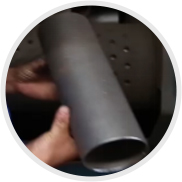 Afrikaans
Afrikaans  Albanian
Albanian  Amharic
Amharic  Arabic
Arabic  Armenian
Armenian  Azerbaijani
Azerbaijani  Basque
Basque  Belarusian
Belarusian  Bengali
Bengali  Bosnian
Bosnian  Bulgarian
Bulgarian  Catalan
Catalan  Cebuano
Cebuano  Corsican
Corsican  Croatian
Croatian  Czech
Czech  Danish
Danish  Dutch
Dutch  English
English  Esperanto
Esperanto  Estonian
Estonian  Finnish
Finnish  French
French  Frisian
Frisian  Galician
Galician  Georgian
Georgian  German
German  Greek
Greek  Gujarati
Gujarati  Haitian Creole
Haitian Creole  hausa
hausa  hawaiian
hawaiian  Hebrew
Hebrew  Hindi
Hindi  Miao
Miao  Hungarian
Hungarian  Icelandic
Icelandic  igbo
igbo  Indonesian
Indonesian  irish
irish  Italian
Italian  Japanese
Japanese  Javanese
Javanese  Kannada
Kannada  kazakh
kazakh  Khmer
Khmer  Rwandese
Rwandese  Korean
Korean  Kurdish
Kurdish  Kyrgyz
Kyrgyz  Lao
Lao  Latin
Latin  Latvian
Latvian  Lithuanian
Lithuanian  Luxembourgish
Luxembourgish  Macedonian
Macedonian  Malgashi
Malgashi  Malay
Malay  Malayalam
Malayalam  Maltese
Maltese  Maori
Maori  Marathi
Marathi  Mongolian
Mongolian  Myanmar
Myanmar  Nepali
Nepali  Norwegian
Norwegian  Norwegian
Norwegian  Occitan
Occitan  Pashto
Pashto  Persian
Persian  Polish
Polish  Portuguese
Portuguese  Punjabi
Punjabi  Romanian
Romanian  Russian
Russian  Samoan
Samoan  Scottish Gaelic
Scottish Gaelic  Serbian
Serbian  Sesotho
Sesotho  Shona
Shona  Sindhi
Sindhi  Sinhala
Sinhala  Slovak
Slovak  Slovenian
Slovenian  Somali
Somali  Spanish
Spanish  Sundanese
Sundanese  Swahili
Swahili  Swedish
Swedish  Tagalog
Tagalog  Tajik
Tajik  Tamil
Tamil  Tatar
Tatar  Telugu
Telugu  Thai
Thai  Turkish
Turkish  Turkmen
Turkmen  Ukrainian
Ukrainian  Urdu
Urdu  Uighur
Uighur  Uzbek
Uzbek  Vietnamese
Vietnamese  Welsh
Welsh  Bantu
Bantu  Yiddish
Yiddish  Yoruba
Yoruba  Zulu
Zulu Innovative Solutions for Conveyor Roller Bracket Design and Manufacturing in Modern Industries
Conveyor Roller Brackets Essential Components for Efficient Material Handling
In the contemporary industrial landscape, efficiency and reliability are paramount for successful operations. One of the key components that contribute to this efficiency is the conveyor roller bracket. These seemingly simple devices play a crucial role in the functioning of conveyor systems, which are essential for the transportation of materials and goods in various sectors, including manufacturing, warehousing, packaging, and distribution.
What Are Conveyor Roller Brackets?
Conveyor roller brackets are supportive structures that hold conveyor rollers in place, allowing them to rotate freely. They are typically made from durable materials such as steel or aluminum, providing the strength needed to support heavy loads while resisting wear and tear. These brackets come in various shapes and sizes, tailored to fit specific conveyor designs and operational requirements.
The Importance of Conveyor Roller Brackets
1. Support and Stability The primary function of conveyor roller brackets is to provide support. They ensure that the rollers remain stable, which is crucial for the smooth operation of the conveyor system. Well-designed brackets help prevent misalignment and reduce the risk of roller failure, which can lead to downtime and increased operational costs.
2. Load Distribution Conveyor systems often carry heavy loads, and the brackets play a vital role in distributing this weight evenly across the structure. This distribution minimizes stress on individual components and extends the lifespan of the entire conveyor system.
3. Ease of Maintenance Conveyor roller brackets are designed with maintenance in mind. They allow for easy access to the rollers, making it simpler to perform inspections, replacements, or adjustments. Regular maintenance is essential for keeping conveyor systems in optimal working condition and preventing unexpected breakdowns.
conveyor roller bracket

4. Versatile Applications These brackets are used in various applications, from light-duty conveyors for packaging to heavy-duty systems for mining or manufacturing industries. Their versatility makes them essential components in any operation where materials need to be moved efficiently.
Types of Conveyor Roller Brackets
There are several types of conveyor roller brackets, each designed for different purposes
1. Fixed Brackets These brackets are permanently mounted and do not allow for any adjustments once installed. They are suitable for straightforward applications where the position of the rollers does not need to change.
2. Adjustable Brackets These offer more flexibility, enabling operators to change the height or angle of the rollers. This adjustability can be beneficial in operations that require modifications as products or loads change.
3. Swivel Brackets These brackets allow rollers to pivot, which is useful in conveyor systems that need to navigate corners or curves. Swivel brackets help keep the rollers aligned with the conveyor path, maintaining efficiency even in complex layouts.
Conclusion
In conclusion, conveyor roller brackets are indispensable elements of any conveyor system. Their role in providing support, stability, load distribution, and maintenance access cannot be overstated. As industries continue to seek more efficient and reliable material handling solutions, the significance of durable and well-designed conveyor roller brackets will only increase. Whether in manufacturing plants or logistics facilities, investing in high-quality conveyor roller brackets is a step towards enhancing operational efficiency and achieving long-term success.
-
Revolutionizing Conveyor Reliability with Advanced Rubber Lagging PulleysNewsJul.22,2025
-
Powering Precision and Durability with Expert Manufacturers of Conveyor ComponentsNewsJul.22,2025
-
Optimizing Conveyor Systems with Advanced Conveyor AccessoriesNewsJul.22,2025
-
Maximize Conveyor Efficiency with Quality Conveyor Idler PulleysNewsJul.22,2025
-
Future-Proof Your Conveyor System with High-Performance Polyurethane RollerNewsJul.22,2025
-
Driving Efficiency Forward with Quality Idlers and RollersNewsJul.22,2025





























